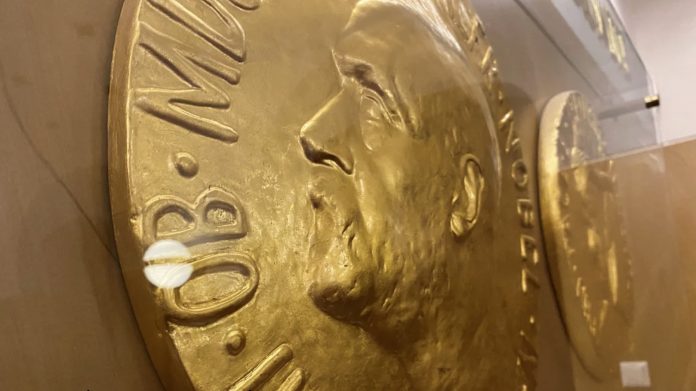นักวิทยาศาสตร์ชั้นนำระดับโลกจะถูกดึงออกจากความมืดมนในแวดวงวิชาการและก้าวสู่เวทีระดับนานาชาติในสัปดาห์นี้ เมื่อมีการประกาศรางวัลโนเบลในสาขาฟิสิกส์ เคมี และสรีรวิทยาหรือการแพทย์
รางวัลโนเบล ซึ่งก่อตั้งโดยอัลเฟรด โนเบล นักอุตสาหกรรมชาวสวีเดนเมื่อกว่าศตวรรษที่แล้ว เป็นการยกย่องผลงานวิจัยล้ำสมัยที่บางครั้งอาจใช้เวลานานหลายทศวรรษกว่าจะสำเร็จ
การคาดเดาว่าใครจะได้รับรางวัลอันทรงเกียรตินี้เป็นเรื่องที่ไม่ง่าย รายชื่อผู้ถูกเสนอชื่อและผู้เสนอชื่อถูกเก็บไว้เป็นความลับ และเอกสารที่เกี่ยวข้องกับกระบวนการคัดเลือกจะถูกปิดผนึกไม่ให้สาธารณชนรับรู้เป็นเวลา 50 ปี
อย่างไรก็ตาม ยังมีการค้นพบที่น่าทึ่งมากมายที่ควรค่าต่อรางวัลโนเบล: นี่คือ 5 ความก้าวหน้าสำคัญที่ยังไม่ถูกขานชื่อเข้ารับรางวัลพลิกชีวิตจากกรุงสตอกโฮล์ม — อย่างน้อยก็ยังไม่ได้รับ
การถอดรหัสจีโนมมนุษย์ครั้งแรก
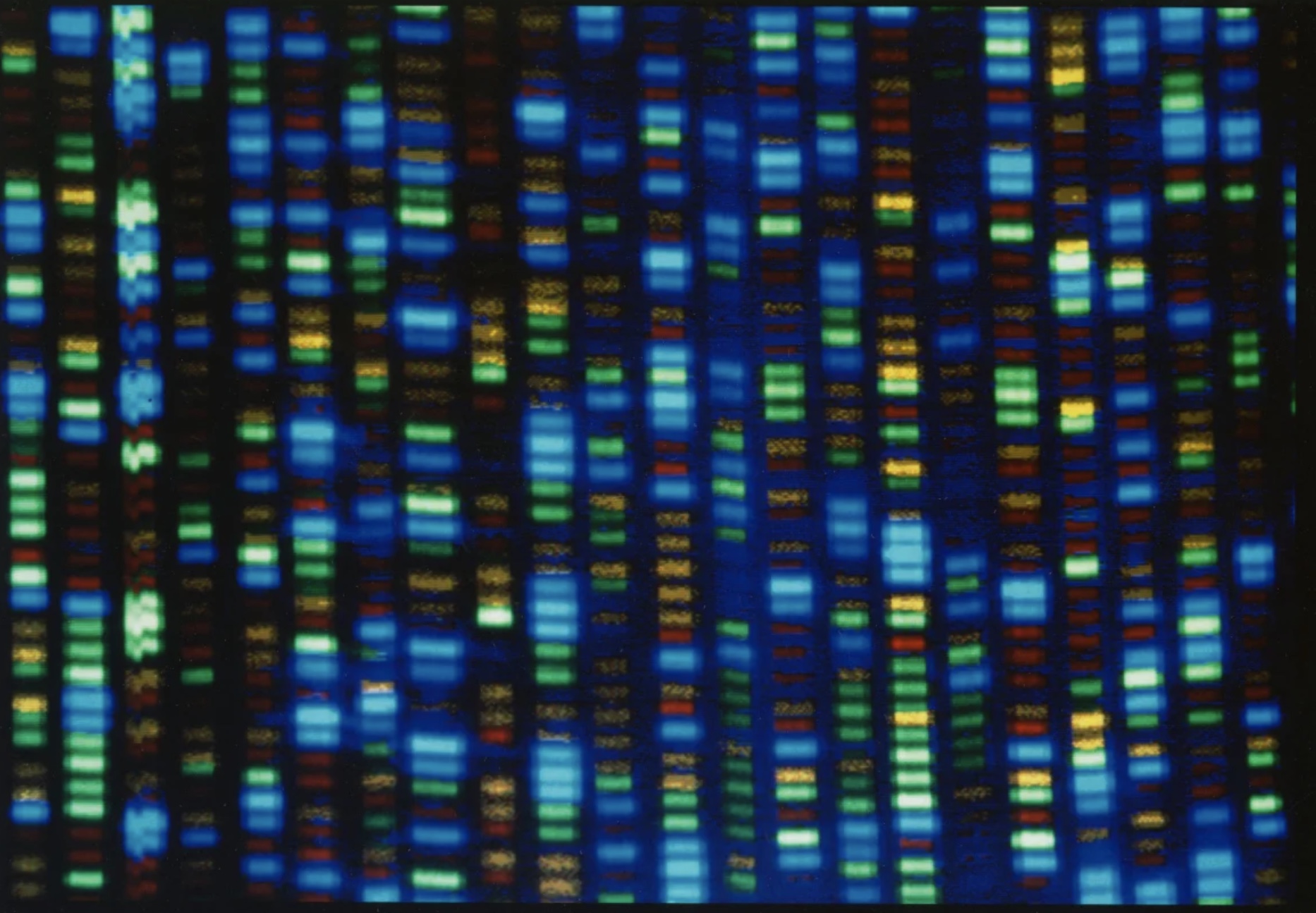
หนึ่งในผลงานที่มักถูกพูดถึงว่าอาจจะได้รับรางวัลโนเบล คือการถอดรหัสจีโนมมนุษย์ ซึ่งเป็นโครงการที่ยิ่งใหญ่และเริ่มต้นขึ้นในปี 1990 ก่อนจะเสร็จสมบูรณ์ในปี 2003
การถอดรหัสพันธุกรรมของมนุษย์นี้เป็นความร่วมมือระดับนานาชาติที่มีนักวิจัยนับพันคนจากสหรัฐอเมริกา สหราชอาณาจักร ฝรั่งเศส เยอรมนี ญี่ปุ่น และจีน
โครงการนี้ได้สร้างผลกระทบอย่างกว้างขวางต่อวงการชีววิทยา การแพทย์ และสาขาอื่น ๆ อีกมากมาย แต่เหตุผลหนึ่งที่อาจทำให้โครงการนี้ยังไม่ได้รับรางวัลโนเบล คือจำนวนบุคคลที่มีส่วนร่วมในความสำเร็จนี้มีมากเกินไป
ตามกฎของรางวัลโนเบลที่อัลเฟรด โนเบล กำหนดไว้ในพินัยกรรมเมื่อปี 1895 รางวัลสามารถมอบให้บุคคลได้สูงสุดเพียง 3 คนต่อสาขาเท่านั้น ซึ่งเป็นความท้าทายที่เพิ่มมากขึ้นในยุคที่งานวิจัยทางวิทยาศาสตร์ต้องอาศัยการทำงานร่วมกันเป็นทีม
การปฏิวัติการรักษาโรคอ้วน
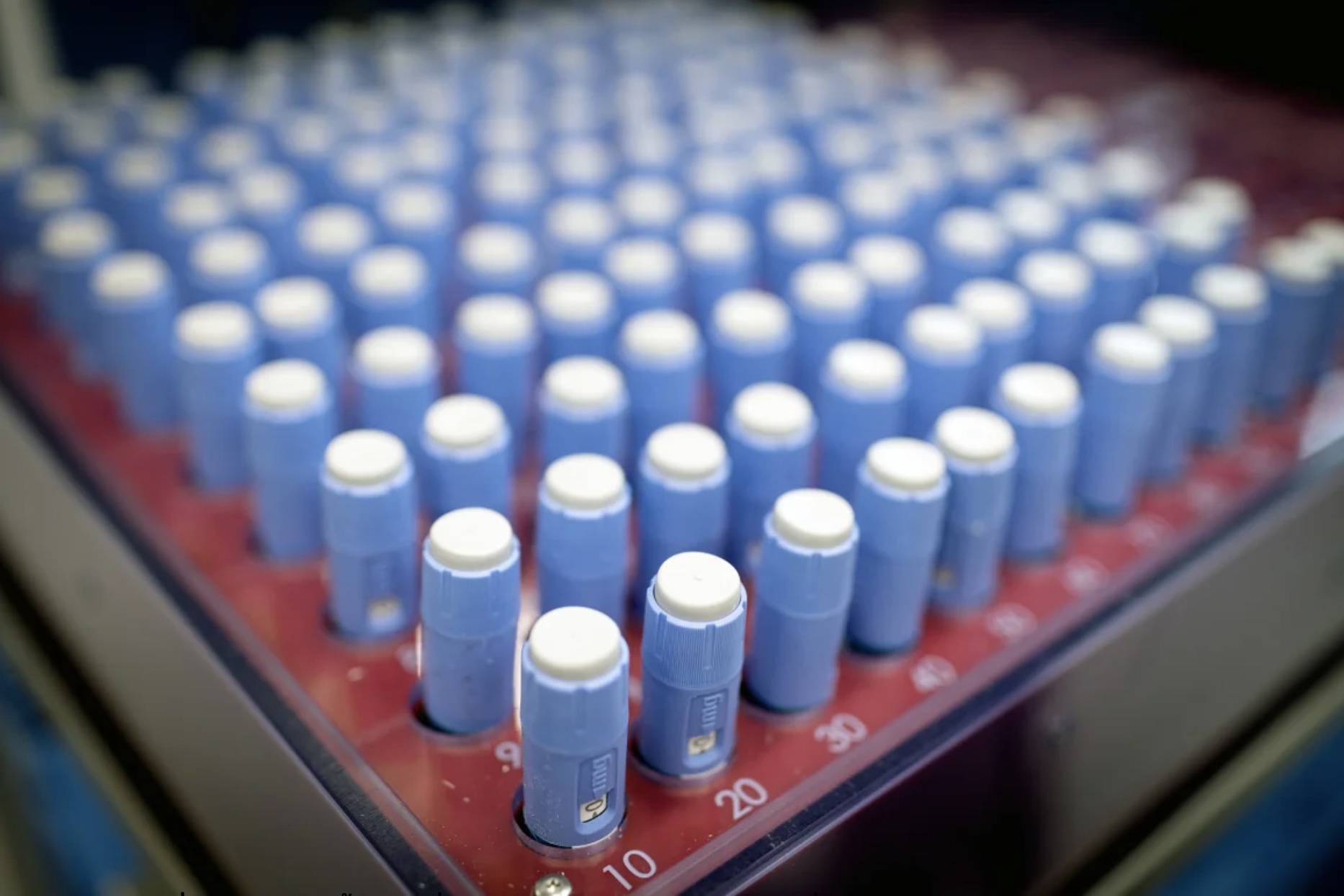
การพัฒนายาที่สามารถลดน้ำหนักซึ่งมีส่วนประกอบของฮอร์โมนที่เรียกว่า GLP-1 (glucagon-like peptide 1) ได้สร้างความเปลี่ยนแปลงอย่างมากในวงการสุขภาพในช่วงไม่กี่ปีที่ผ่านมา
หนึ่งในแปดของประชากรโลกกำลังเผชิญกับโรคอ้วน ซึ่งเป็นจำนวนที่เพิ่มขึ้นกว่าเท่าตัวตั้งแต่ปี 1990 ยาดังกล่าวมีคุณสมบัติในการลดระดับน้ำตาลในเลือดและช่วยลดความอยากอาหาร จึงมีศักยภาพในการเปิดศักราชใหม่ของการรักษาโรคอ้วนและภาวะที่เกี่ยวข้อง เช่น โรคเบาหวานประเภท 2
นักวิทยาศาสตร์สามคนที่มีบทบาทสำคัญในพัฒนายาตัวนี้ ซึ่งมีชื่อว่าเซมาลูไทด์ (semaglutide) ได้รับรางวัล Lasker-DeBakey Clinical Medical Research Award ประจำปี 2024 ซึ่งมักถูกมองว่าเป็นสัญญาณบอกถึงความเป็นไปได้ที่นักวิทยาศาสตร์หรือการค้นพบใดจะได้รับรางวัลโนเบล
Svetlana Mojsov นักชีวเคมีและศาสตราจารย์วิจัยจากมหาวิทยาลัยร็อกกี้เฟลเลอร์ และ Dr. Joel Habener นักต่อมไร้ท่อและศาสตราจารย์ด้านการแพทย์จากโรงเรียนแพทย์มหาวิทยาลัยฮาร์วาร์ด ได้ช่วยในการระบุและสังเคราะห์ GLP-1 ขณะที่ Lotte Bjerre Knudsen ที่ปรึกษาด้านวิทยาศาสตร์และการพัฒนาในช่วงต้นจากบริษัท Novo Nordisk มีบทบาทสำคัญในการเปลี่ยนมันให้กลายเป็นยาที่มีประสิทธิภาพในการลดน้ำหนัก ซึ่งปัจจุบันมีผู้คนนับล้านทั่วโลกใช้อยู่
ปัญญาประดิษฐ์ที่เปลี่ยนแปลงโลก
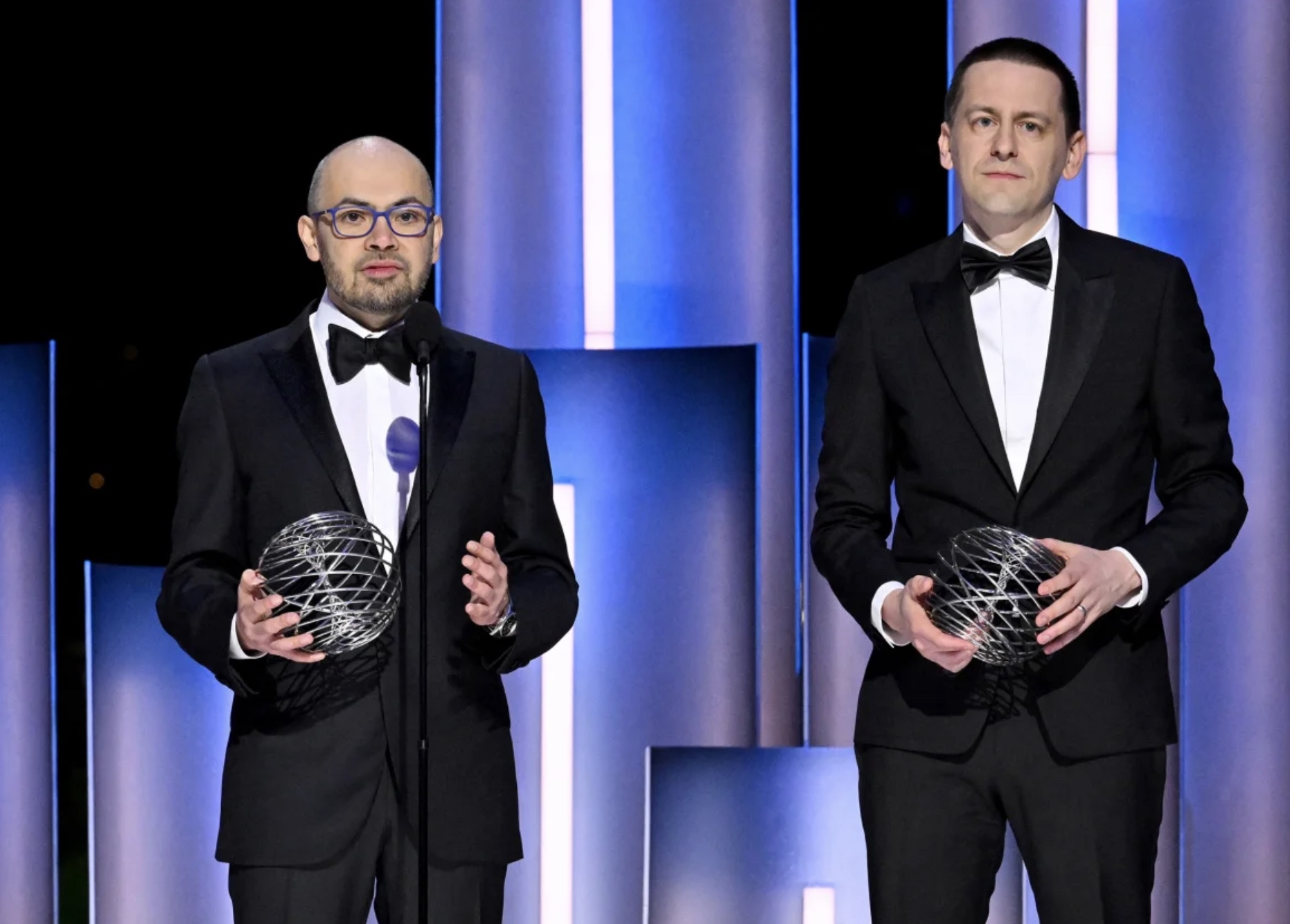
ปัญญาประดิษฐ์ หรือ AI กำลังเปลี่ยนแปลงชีวิตผู้คนอย่างรวดเร็วในแบบที่ไม่เคยมีมาก่อน
แม้ว่าจะเป็นสาขาที่มีการแข่งขันสูง แต่มีสองชื่อที่โดดเด่น ตามการวิเคราะห์ของ David Pendlebury หัวหน้าฝ่ายวิจัยของสถาบันข้อมูลทางวิทยาศาสตร์ Clarivate Pendlebury ระบุบุคคลที่มีสิทธิ์ได้รับรางวัลโนเบล โดยวิเคราะห์จากความถี่ที่ผลงานวิทยาศาสตร์ของพวกเขาถูกอ้างอิงโดยนักวิทยาศาสตร์คนอื่น ๆ ตลอดหลายปีที่ผ่านมา
บุคคลสำคัญสองคนนี้คือ Demis Hassabis และ John Jumper ผู้คิดค้นฐานข้อมูลโครงสร้างโปรตีน AlphaFold ของ Google DeepMind ซึ่งเป็นโปรแกรม AI ที่สามารถถอดรหัสโครงสร้างสามมิติของโปรตีนจากลำดับกรดอะมิโน ซึ่งนักวิจัยทั่วโลกกว่า 2 ล้านคนใช้
AlphaFold เปรียบเสมือน “Google search” สำหรับโครงสร้างโปรตีน โดยให้การเข้าถึงโมเดลโปรตีนที่คาดการณ์ได้อย่างรวดเร็ว ซึ่งช่วยเร่งความก้าวหน้าในชีววิทยาพื้นฐานและสาขาอื่น ๆ ที่เกี่ยวข้อง
นับตั้งแต่บทความสำคัญของพวกเขาถูกตีพิมพ์ในปี 2021 มีการอ้างอิงถึงมากกว่า 13,000 ครั้ง ซึ่ง Pendlebury อธิบายว่าเป็น “จำนวนที่น่าทึ่ง” จากจำนวนบทความวิทยาศาสตร์ทั้งหมด 61 ล้านบทความ มีเพียงประมาณ 500 บทความเท่านั้นที่ถูกอ้างอิงมากกว่า 10,000 ครั้ง
Jumper และ Hassabis ได้รับรางวัล Lasker และ Breakthrough ประจำปี 2023 มาแล้ว Pendlebury กล่าวว่ารางวัลโนเบลสาขาเคมีอาจอยู่ในอนาคตของพวกเขา พร้อมกับนักวิจัยคนที่สาม David Baker ผู้อำนวยการสถาบันออกแบบโปรตีนแห่งมหาวิทยาลัยวอชิงตัน ซึ่งเป็นผู้วางรากฐานสำหรับ AlphaFold
อย่างไรก็ตาม Pendlebury ยังกล่าวว่าอาจเร็วเกินไปสำหรับคณะกรรมการโนเบลที่มักจะมีความระมัดระวังในการพิจารณารางวัลนี้
“บางคนเสนอว่าอาจเร็วเกินไปสำหรับรางวัลนี้ เนื่องจากงานวิจัยยังใหม่เกินไป และนี่เป็นพื้นที่ใหม่อย่างสิ้นเชิง คือการประยุกต์ใช้ AI ในการวิจัยทางวิทยาศาสตร์” เขากล่าว
ทำความเข้าใจไมโครไบโอมในลำไส้
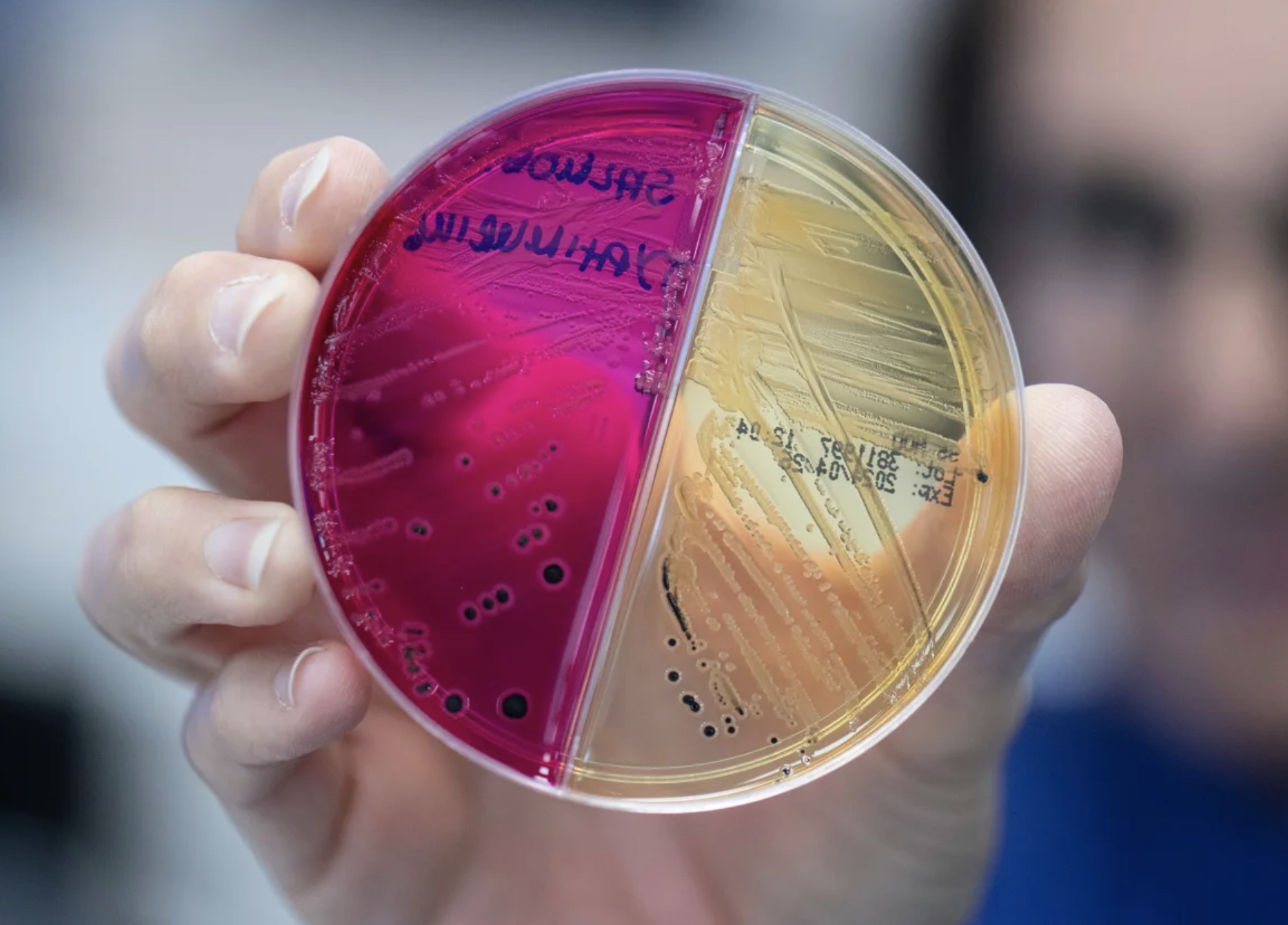
เราไม่ได้อยู่ลำพังในร่างกายของเราเอง ยังมีจุลชีพนับล้านล้านตัว รวมถึงแบคทีเรีย ไวรัส และเชื้อรา ที่อาศัยอยู่ในและบนร่างกายมนุษย์ ซึ่งเรียกรวมกันว่า ไมโครไบโอมของมนุษย์
ด้วยความก้าวหน้าในด้านการถอดรหัสพันธุกรรมในช่วงสองทศวรรษที่ผ่านมา นักวิทยาศาสตร์สามารถเข้าใจบทบาทของจุลชีพเหล่านี้ได้ดียิ่งขึ้น ทั้งวิธีที่พวกมันสื่อสารกันและมีปฏิสัมพันธ์กับเซลล์มนุษย์ โดยเฉพาะอย่างยิ่งในลำไส้
Pendlebury กล่าวว่า สาขานี้ควรจะได้รับการยกย่องจากรางวัลโนเบลมานานแล้ว
นักชีววิทยา Dr. Jeffrey Gordon ศาสตราจารย์ด้านการวิจัยแห่งมหาวิทยาลัยวอชิงตันในเมืองเซนต์หลุยส์ เป็นผู้บุกเบิกในสาขานี้
Gordon พยายามทำความเข้าใจไมโครไบโอมในลำไส้ของมนุษย์และวิธีที่มันมีอิทธิพลต่อสุขภาพของมนุษย์ โดยเริ่มจากการวิจัยในหนูทดลอง เขาเป็นผู้นำงานวิจัยที่ค้นพบว่าไมโครไบโอมในลำไส้มีบทบาทในผลกระทบทางสุขภาพจากภาวะทุพโภชนาการ ซึ่งส่งผลต่อเด็กเกือบ 200 ล้านคนทั่วโลก และกำลังพัฒนาอาหารเฉพาะทางเพื่อปรับปรุงสุขภาพของลำไส้
ยีนก่อมะเร็ง
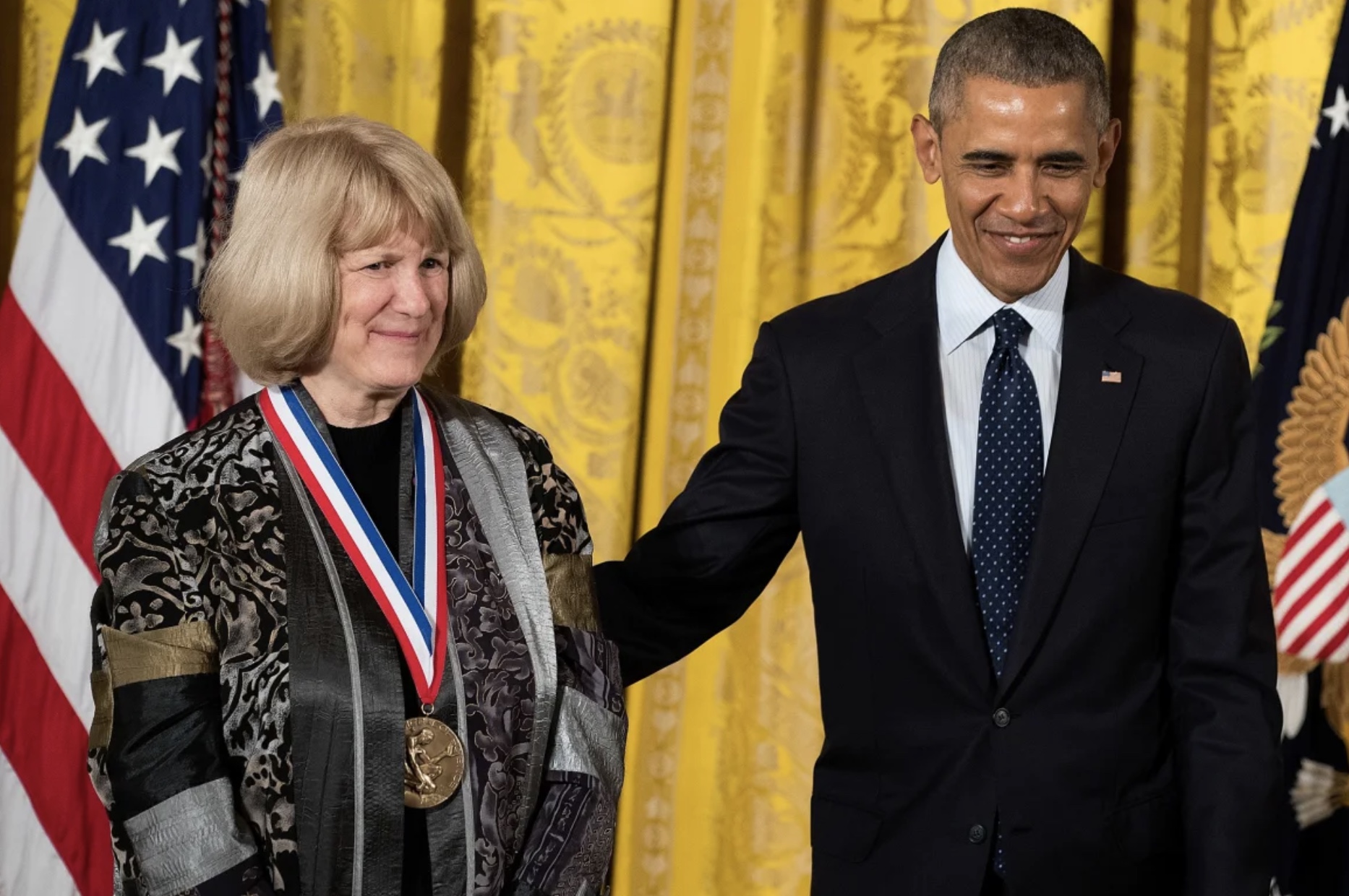
ในช่วงปี 1970s มีความเข้าใจว่ามะเร็งอาจถ่ายทอดในครอบครัวได้ แต่ความคิดหลักเกี่ยวกับมะเร็งเต้านมในเวลานั้นยังไม่คำนึงถึงปัจจัยทางพันธุกรรมที่ทำให้เกิดโรค
Mary-Claire King ศาสตราจารย์ด้านการแพทย์และวิทยาศาสตร์จีโนมจากคณะแพทยศาสตร์มหาวิทยาลัยวอชิงตัน ซึ่งมีพื้นฐานในการศึกษาความแตกต่างทางพันธุกรรมระหว่างมนุษย์และลิงชิมแปนซี ได้ใช้แนวทางใหม่ในการศึกษาเรื่องนี้
ในช่วงที่ยังไม่มีแผนที่จีโนมมนุษย์ King ใช้เวลาถึง 17 ปีในการค้นหาบทบาทของการกลายพันธุ์ของยีน BRCA1 ที่มีต่อการเกิดมะเร็งเต้านมและรังไข่
การค้นพบนี้ทำให้เกิดการตรวจทางพันธุกรรมที่สามารถระบุผู้หญิงที่มีความเสี่ยงสูงต่อการเกิดมะเร็งเต้านมได้ รวมถึงแนะนำวิธีการลดความเสี่ยง เช่น การตรวจเพิ่มเติมและการผ่าตัดป้องกัน
5 Nobel-worthy discoveries that haven’t won the prize
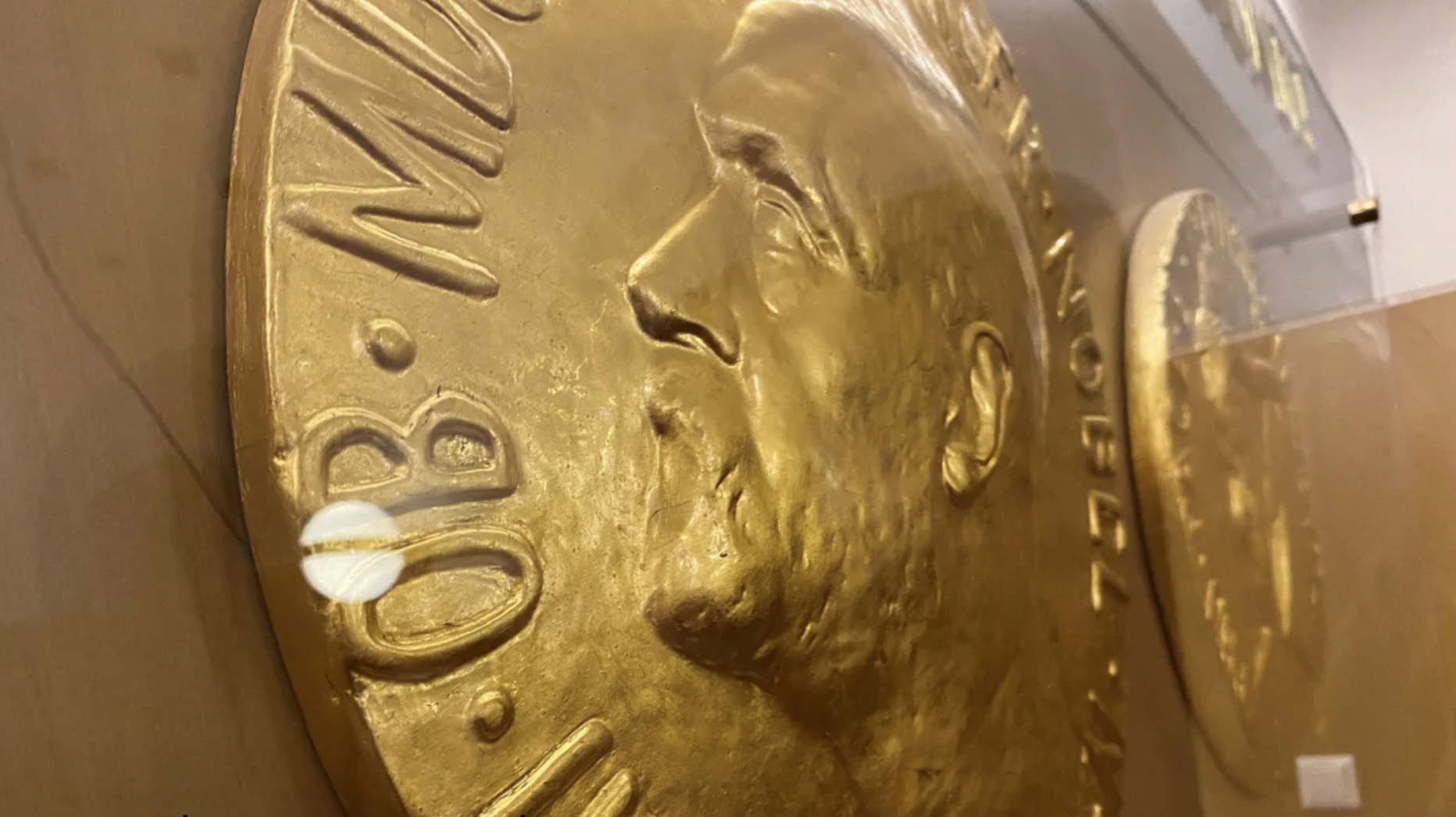
The best minds in science will be thrust from academic obscurity into the spotlight this week when the Nobel Prizes in physics, chemistry, and physiology or medicine are announced.
The accolades, established by Swedish industrialist Alfred Nobel more than a century ago, celebrate groundbreaking work that can take decades to complete.
It’s notoriously tricky to predict who will win science’s top honors. The short list and nominators remain a secret, and documents revealing the details of the selection process are sealed from public view for 50 years.
However, there is no shortage of Nobel-worthy discoveries: Here are five breakthroughs that haven’t resulted in a life-changing call from Stockholm — at least not yet.
The first human genome

One often discussed candidate for the Nobel Prize is the mapping of the human genome, an audacious project that launched in 1990 and was completed in 2003.
Cracking the genetic code of human life involved an international consortium of thousands of researchers in the United States, United Kingdom, France, Germany, Japan and China.
The endeavor has had a far-reaching impact on biology, medicine and many other fields. But one reason the project may not have earned a Nobel Prize is the sheer number of people involved in the feat.
According to the rules laid down by Nobel in his 1895 will, the prizes can only honor up to three people per award — a growing challenge given the collaborative nature of much scientific research.
A revolution in obesity treatment

The development of blockbuster weight-loss drugs that mimic a hormone called glucagon-like peptide 1, or GLP-1, has shaken up the world of health care in the past few years.
One in eight people in the world live with obesity — a figure that has more than doubled since 1990 — and the medication, which lowers blood sugar and curbs appetite, has the potential to usher in a new era for obesity treatment and related conditions such as type 2 diabetes.
Three scientists — Svetlana Mojsov, Dr. Joel Habener and Lotte Bjerre Knudsen — involved in the development of the drug, known as semaglutide, won the 2024 Lasker-DeBakey Clinical Medical Research Award, often considered an indicator of whether a specific breakthrough or scientist will win a Nobel Prize.
Mojsov, a biochemist and associate research professor at the Rockefeller University, and Habener, an endocrinologist and professor of medicine at Harvard Medical School, helped identify and synthesize GLP-1. Knudsen, chief scientific adviser in research and early development at Novo Nordisk, played a pivotal role in turning it into an effective drug promoting weight loss that millions of people take today.
Transformative AI

Artificial intelligence, or AI, is transforming people’s lives at an unprecedented pace.
It’s a crowded field, but two names stand out, according to David Pendlebury, head of research analysis at Clarivate’s Institute for Scientific Information. Pendlebury identifies “Nobel-worthy” individuals by analyzing how often fellow scientists cite their key scientific papers throughout the years.
The two key figures are Demis Hassabis and John Jumper, the Google DeepMind inventors of the AlphaFold Protein Structure Database — an AI program that decodes the 3D structures of proteins from amino acid sequences that at least 2 million researchers around the world have used.
AlphaFold acts as a “Google search” for protein structures, providing instant access to predicted models of proteins, accelerating progress in fundamental biology and other related fields.
Since the pair’s key paper was published in 2021, it has been cited more than 13,000 times, which Pendlebury described as an “exceptional number.” Out of a total of 61 million scientific papers, only around 500 have been cited more than 10,000 times, he said.
Jumper and Hassabis have already won the 2023 Lasker and the Breakthrough prizes. A Nobel Prize for chemistry may be in their future, Pendlebury said, along with a third researcher, David Baker, director of the Institute for Protein Design at the University of Washington School of Medicine, who laid the groundwork for AlphaFold.
But it might be premature for the typically conservative Nobel committee to honor the field, Pendlebury said.
“Some people have suggested it may be too early for such a prize, that the work is of too recent vintage, and that this is an entirely new area, the application of AI to scientific research,” he said.
Understanding the gut microbiome

We’re not alone in our bodies. Trillions of microbes — bacteria, viruses and fungi — live on and in the human body, collectively known as the human microbiome.
With advances in genetic sequencing in the past two decades, scientists have been better able to understand what these microbes do, how they talk to one another and interact with human cells, particularly in the gut.
The field is long overdue for Nobel recognition, Pendlebury said.
Biologist Dr. Jeffrey Gordon, the Dr. Robert J. Glaser Distinguished University Professor at Washington University in St. Louis, is a pioneer in the field.
Gordon strove to understand the human gut microbiome and how it shapes human health, starting with lab research in mice. He led work that found that the gut microbiome plays a role in the health effects of undernutrition, which affects almost 200 million children globally, and he is developing food interventions that target improved gut health.
Cancer-causing genes

In the 1970s, it was understood that cancer sometimes ran in families, but mainstream thinking about breast cancer did not factor in any inherited susceptibility to the disease.
With a background in researching the genetic differences between humans and chimpanzees, Mary-Claire King, now a professor of medicine and genome sciences at the University of Washington School of Medicine, took a fresh approach.
Working long before scientists had any kind of map of the human genome, King spent 17 years detecting and identifying the role a mutation of the BRCA1 gene played in breast and ovarian cancer.
The discovery has enabled genetic testing that can identify women who are at increased risk of breast cancer as well as what steps to take to reduce their risk, such as additional screening and preventive surgeries.
By Katie Hunt, CNN






